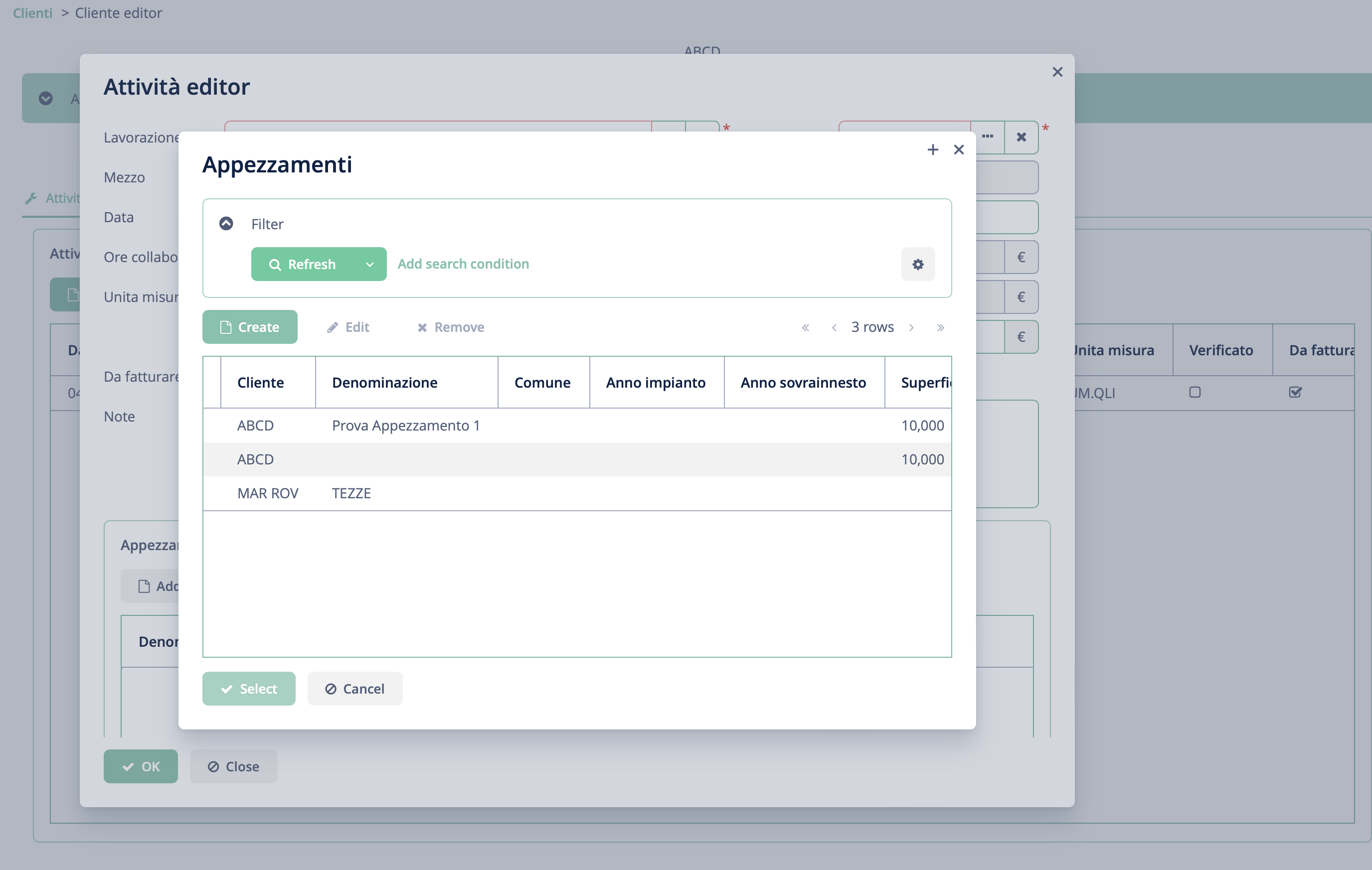Hi,
I have a scenario like this:
Task (Attività)
Customer (Cliente/i)
Site (Appezzamento/i)
customer has Many site
customer has Many task
task has Many site (customer.site)
site has Many task (customer.task)
Which is the best way to model this scenario in Jmix?
I had created
1 - Customer Entity and Site entity
2 - composition relation Customer One to Many Site
3 - Task entity
4 - association relation Task Many to One Customer
5 - association relation Task Many to Many Site
So when I edit task I would like, after the customer selection, filter the Site browser screen by the customer when I add a site to task.
I would like to find only fields that have ABCD like customer
Thanks in advance.
